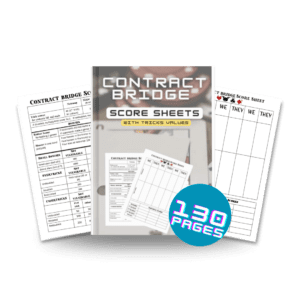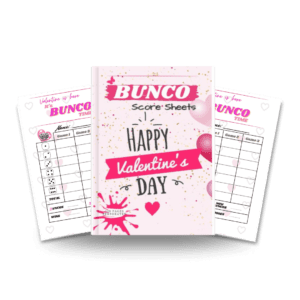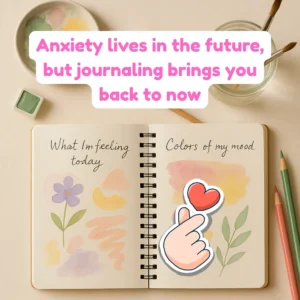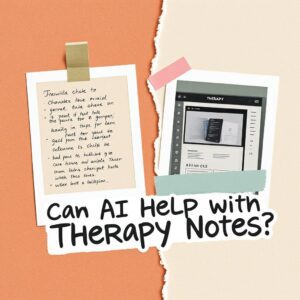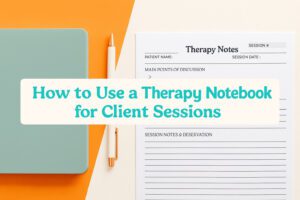You know that feeling when your thoughts spiral faster than you can catch them? When your chest tightens and your mind floods with “what-ifs” that seem impossible to silence?
You’re not alone in this struggle. Millions of people experience anxiety daily, searching for relief that doesn’t require hours of complicated techniques or expensive therapy sessions.
What if I told you that five minutes—just five—could help quiet that mental storm? Research-backed 5-minute anxiety journal techniques have helped thousands find relief through simple, guided journaling for mental health.
Today, you’ll discover five proven journal prompts for anxiety that work in just minutes a day. Plus, you’ll get our free anxiety journal printable to start your practice immediately. As a mental health content specialist who’s worked with anxiety management tools for over a decade, I’ve seen these simple techniques transform overwhelming days into manageable moments.
Why 5-Minute Journaling Works: The Science Behind Quick Anxiety Relief
Your racing thoughts aren’t just “in your head”—they’re creating real physiological stress responses. But here’s the powerful truth: writing them down literally changes your brain.
Research from the Journal of Anxiety Disorders shows that expressive writing significantly reduces anxiety symptoms in as little as 15-20 minutes across three sessions. But even shorter sessions prove effective for immediate relief.
Studies indicate that handwriting specifically activates different neural pathways than typing. Dr. James Pennebaker’s groundbreaking research on therapeutic writing found that the physical act of handwriting engages the brain’s emotional processing centers more effectively than digital alternatives.
The psychological principle at work is called “cognitive offloading.” When anxious thoughts cycle in your mind, they consume mental resources and amplify stress. Writing transfers these thoughts from your working memory onto paper, literally freeing up mental space.
Mental health journaling works because it forces your brain to organize chaotic emotions into structured language. This process alone reduces the emotional intensity of anxious thoughts by up to 40%, according to cognitive behavioral therapy research.
Five minutes is the sweet spot—long enough for meaningful cognitive offloading, but short enough to avoid overwhelming yourself when anxiety already feels unmanageable.
For professionals or those tracking their progress in therapy, you can use a dedicated therapy notebook to keep track of important information and insights during client sessions.
The 5 Proven Prompts That Actually Work
#1: The 3-2-1 Worry Dump
Write down 3 specific worries, 2 things you can control about them, and 1 action you’ll take today.
This prompt works because it transforms vague anxiety into concrete problems with actionable solutions. Your brain craves specificity—the more precise you make your worries, the less power they hold over you.
Try this: “3 worries: Missing tomorrow’s deadline, disappointing my boss, losing my job. 2 things I control: Working for 2 more focused hours tonight, asking for a brief extension if needed. 1 action: Text my boss now to update on progress.”
#2: The Anxiety Weather Report
Describe your anxiety as weather, then write how the “forecast” might change.
This metaphor activates your brain’s pattern-recognition systems while creating emotional distance. Weather passes—and so does anxiety. This prompt helps you observe anxious feelings without becoming overwhelmed by them.
Try this: “Today feels like a thunderstorm—dark clouds, rumbling thoughts, sudden lightning strikes of panic. But storms pass. By evening, I might see breaks in the clouds. Tomorrow could bring gentle rain or even sunshine.”
#3: The 5-4-3-2-1 Grounding Check-In
List 5 things you see, 4 you hear, 3 you feel, 2 you smell, 1 you taste.
This sensory grounding technique interrupts anxiety’s tendency to pull you into future fears or past regrets. It anchors you firmly in the present moment through mindfulness writing.
Try this: “See: My blue coffee mug, sunlight on the wall, my dog sleeping, stack of books, green plant.
Hear: Air conditioner humming, birds outside, neighbor’s music, my breathing.
Feel: Soft sweater, cool air, pen in hand. Smell: Coffee, vanilla candle.
Taste: Mint from my gum.”
#4: The Wise Friend Response
This technique activates your brain’s perspective-taking abilities and self-compassion responses. We’re often kinder to friends than ourselves—this prompt bridges that gap through guided journaling for mental health.
Try this example: “Anxious me : ‘I’m spiraling about this presentation. What if I forget everything? What if they think I’m incompetent?'” “Wise friend: ‘You’ve prepared well and presented before. Even if you stumble, people understand—they’ve been there too. You’re competent and this feeling will pass.'”
#4: The Wise Friend Response
Write one small win from today and one thing you’re looking forward to tomorrow.
This prompt rewires your brain’s negativity bias by training attention toward positive experiences and future hope. It’s especially powerful for anxiety that feeds on feelings of helplessness or hopelessness.
Write every win: “Today’s tiny victory: I took three deep breaths instead of snapping when I felt overwhelmed at lunch. Tomorrow’s gift: Coffee with Sarah—I always laugh when we’re together.”
Building Your 5-Minute Habit: Making Consistency Simple
Start with just one prompt. Choose the technique that resonates most and practice it for one week before adding others. Overwhelming yourself defeats the purpose of quick anxiety relief.
Time it right. Research shows morning journaling sets a calmer tone for the day, while evening sessions help process daily stress. Experiment to find your optimal window.
Prepare for difficult days. When anxiety feels too intense for full prompts, simply write “I feel anxious” and rate it 1-10. This maintains your habit without adding pressure.
Keep your journal and pen in the same spot every day. The easier you make it to start, the more likely you’ll maintain this powerful stress relief technique.
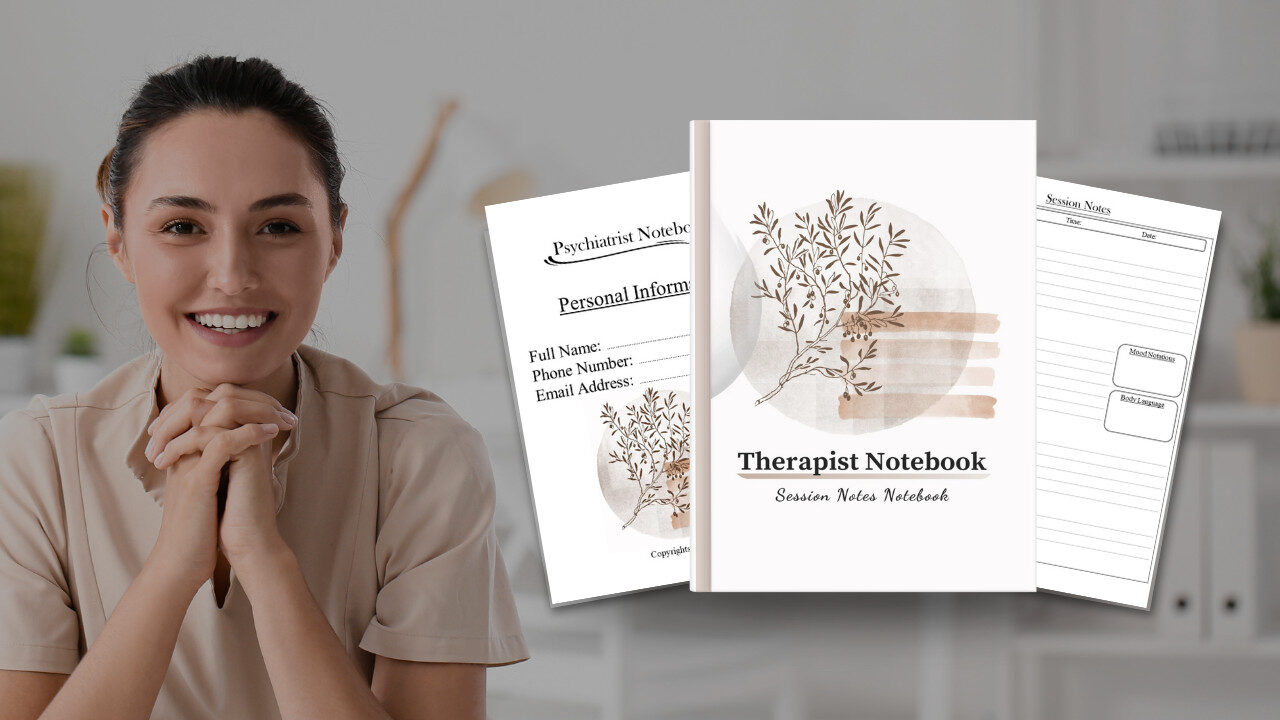
What Makes These Prompts Different from Generic Journaling?
Unlike stream-of-consciousness writing that can sometimes amplify anxious thoughts, these prompts use specific cognitive behavioral therapy principles to redirect rumination patterns.
Each technique incorporates proven anxiety management strategies: cognitive restructuring (the 3-2-1 Dump), mindfulness grounding (5-4-3-2-1), emotional distancing (Weather Report), self-compassion (Wise Friend), and positive psychology (Tiny Victory).
Generic journaling often leaves anxious minds spinning in circles. These structured prompts create clear beginning and ending points, preventing the endless worry loops that make anxiety worse.
